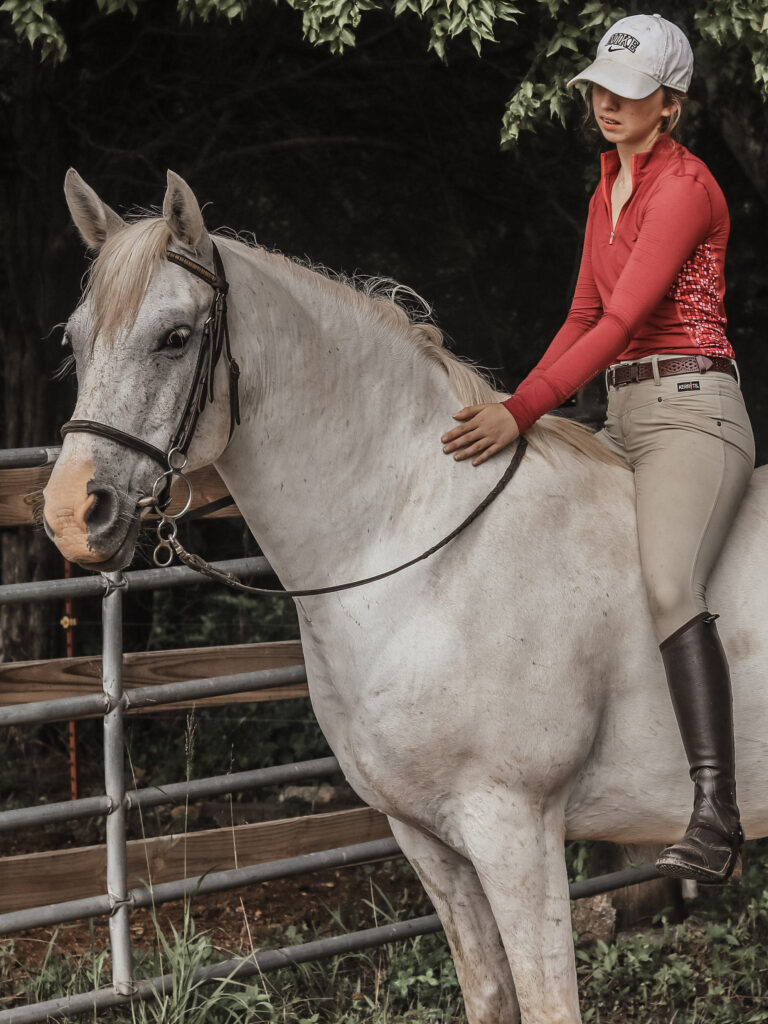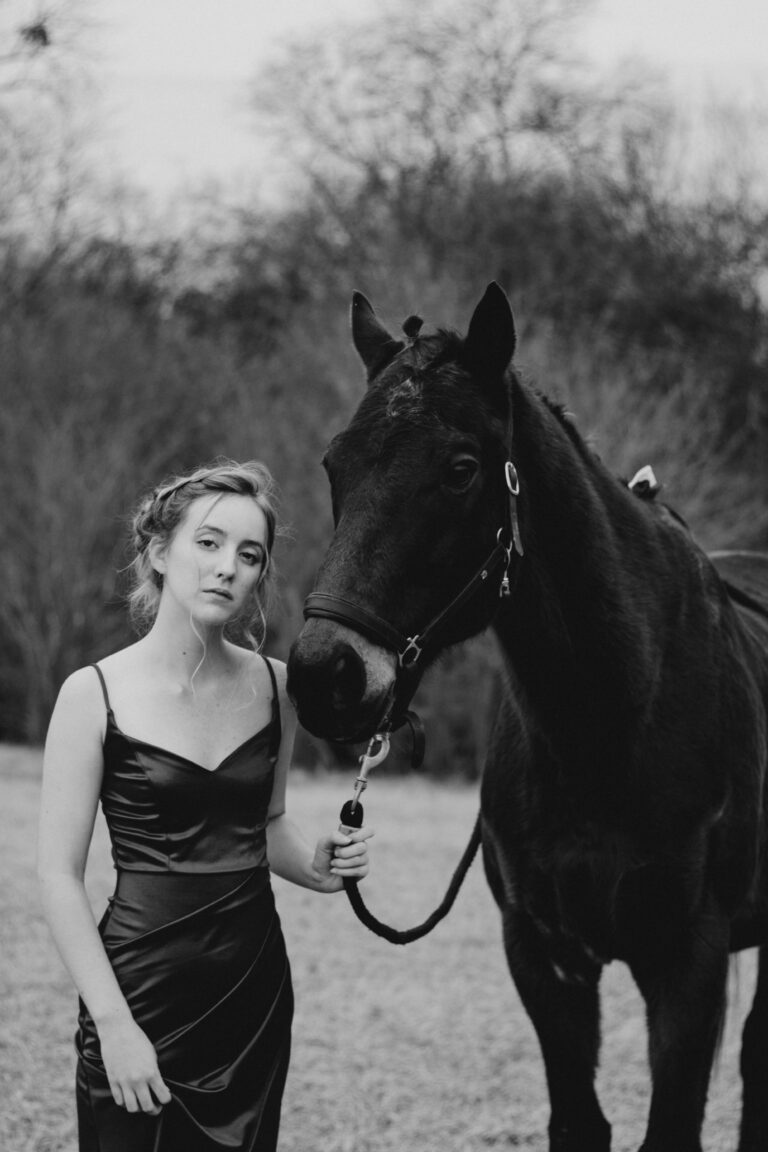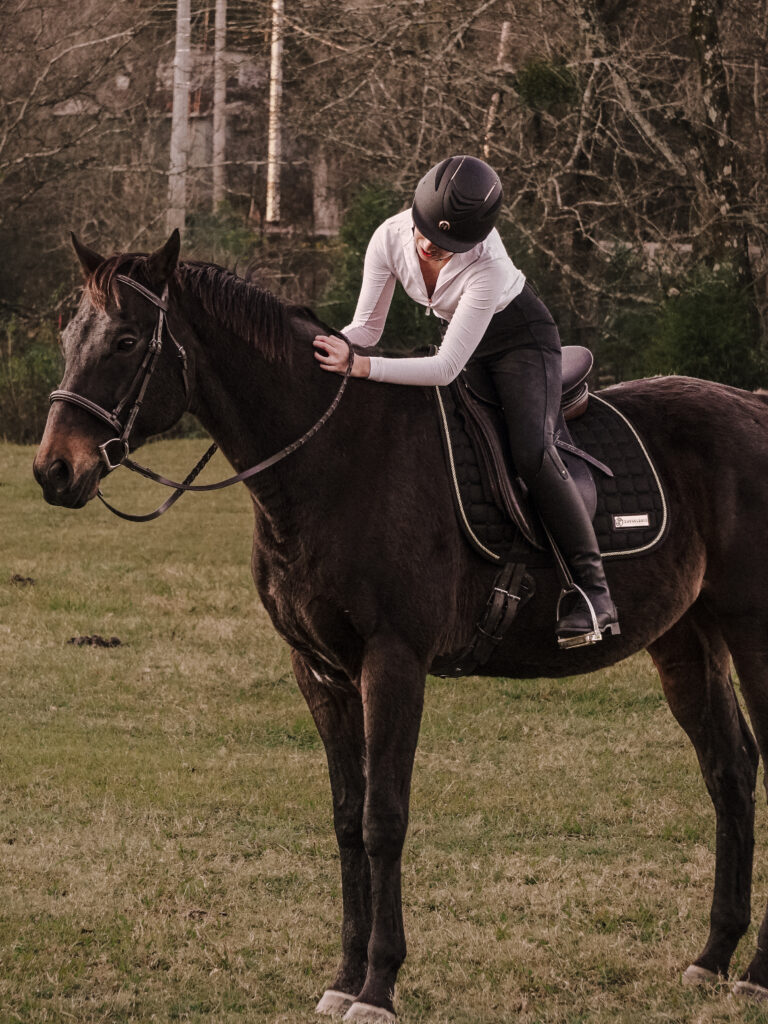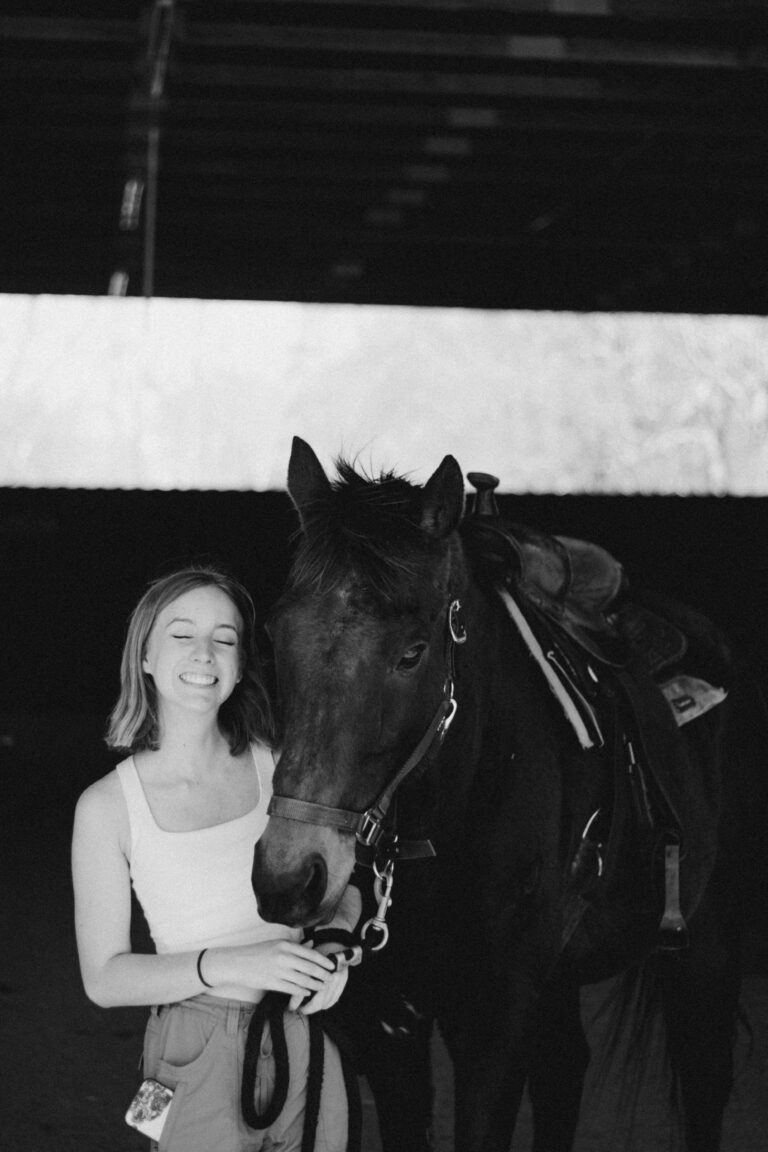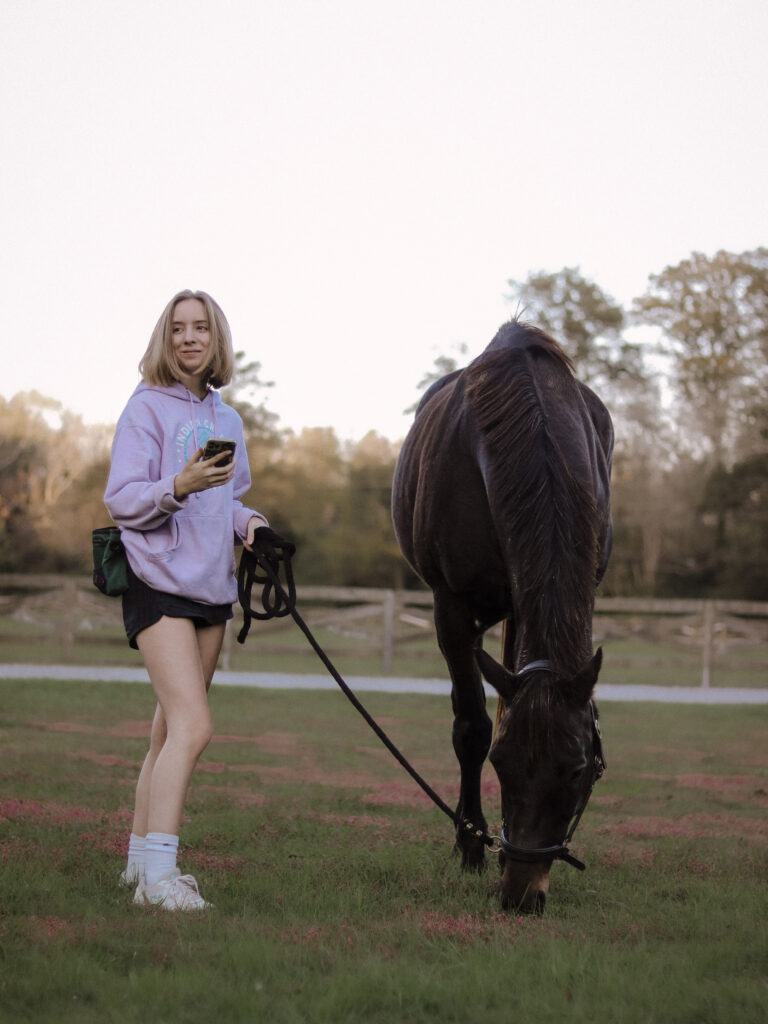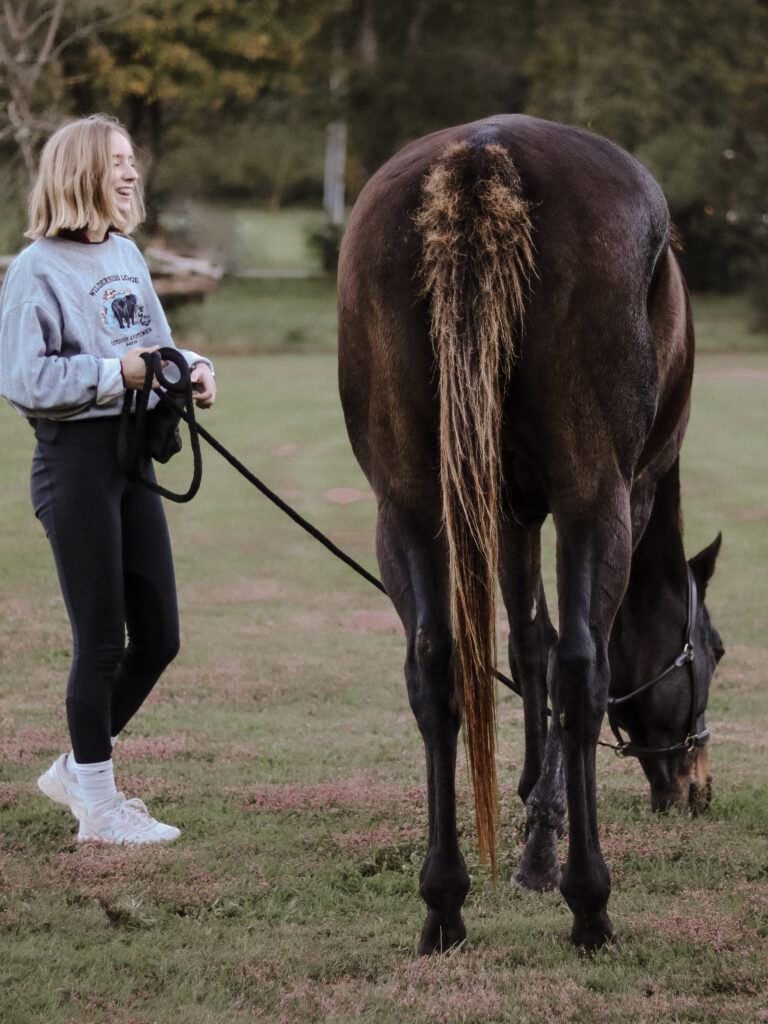Everything you Need for your First Horse: The Ultimate Guide!
There is absolutely nothing more exciting than bringing a horse home for the first time… but it can be overwhelming all the same. In this post, I’ll be talking about everything you need for your first horse!
In the fall of 2016, I did it: I finally convinced my parents to let me buy my first horse! And frankly, it took years of asking and begging, but the hard work paid off in the end. Despite my excitement, there was a small problem (I didn’t realize this back in the day) which was the fact that I had limited knowledge about horse ownership.
Despite growing up around horses, I never had any formal training. Eventually, I figured it out and grew so much as an equestrian; nevertheless, it certainly wouldn’t of hurt to have a guide to help me along the way.
At the end of the day, there is so much to take into consideration as a first time horse owner, but luckily, this is such a forgiving sport and the possibility of new knowledge is always bursting at the seams! So. Don’t sweat it!
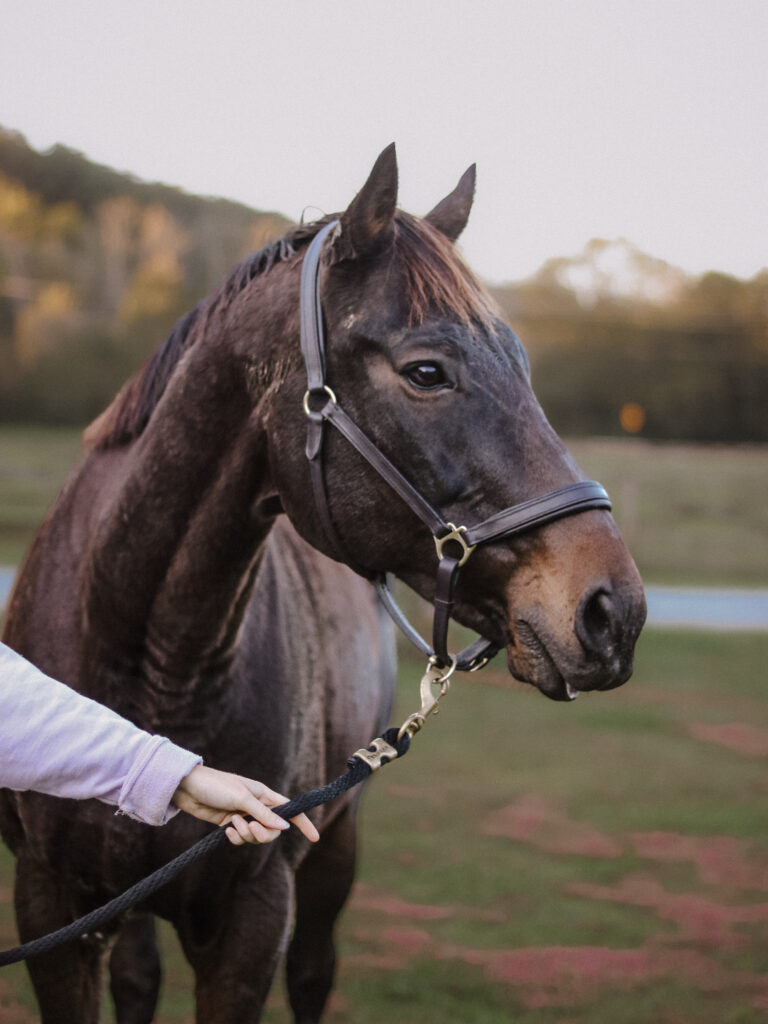
And whether you’ve been in a lesson program (very recommended beforehand so you can be confident!) or you’re just looking to hit the trails, this post is for YOU! So without further delay, here is everything you need for your first horse!
This post contains affiliate links and I may make profit from your purchase(s)
Everything you need for your first horse: around the barn!
For this section, keep in mind the location your horse will reside. If you’re boarding, take a look at all of the different facilities and what you’ll have access to; and probably 9 times out of 10, you’ll have full access to pitch forks and other basic necessities, so buying your own won’t be necessary.
If you’re keeping the new addition at your house or on private property, then you’ll most likely want to pick up some of the items on the following list!
You might be interested in: How to Find the Best Equestrian Coach for You!
Feeding time!
Horses were designed to always be eating, which is why turnout is so important. Though, depending on the work they’re in and whether they’re an easy or hard keeper… you might have to adapt the feeding environment.
Talking to previous owners as well as your vet can help provide clarity on what route to take. Maybe you’re getting a little ol’ quarter horse who requires zero feed, or maybe an old thoroughbred who’ll eat you out of house and home and STILL be skinny.
Either way, here are some feeding essentials for your new horse!
Feed pans and buckets:
Whether you need to incorporate feed into your routine or not, it’s always a good idea to have feed pans and buckets on hand.
I can’t count how many times I’ve used buckets and pans for soaking hooves or to aid in bath time. And if you’re getting a thoroughbred like me… trust me. You’ll need a few of these for sure!
Hay nets:
Hay nets have many benefits that you may want to consider! For starters: convenience. Being designed to hang up anywhere, hay nets makes it easy to feed your horse while traveling, stall boarding, tying, and tacking up.
Another popular use for them is to reduce hay wastage. Tying your hay up off the ground will help to keep it separate from dirt and shavings, as well as any left overs that would otherwise be overlooked.
And lastly, hay nets encourage slow feeding that will assist in better digestion and lower risk of colic. Though, some will argue that keeping a horse’s food off the ground isn’t natural – so be sure to do your own research and decide what’s best for you!
Here are some hay net options:

Water Troughs:
Like pretty much every other animal alive, horses drink water. And lots of it. Though, depending on where you live, it isn’t as simple as just giving your horse water.
In the winter time, it can be a chore keeping your water trough from freezing over. But fortunately, you do have options: a water heater like this Farm Innovators Tank De-Icer will handle the job nicely.
However, if you’re not wanting to rack up that electricity bill, then consider a putting a heavy toy like this Horsemans Jolly Ball in your trough. This will encourage your horse to splash around the water, helping to keep the water thawed.
Barn Maintenance!
It would be all sunshine and rainbows if we spent 100% of our time bonding with and riding our horses; unfortunately, that is not the case. If there is one thing I’ve learned about horse ownership… it’s demanding, to say the least.
There are so many things to consider when simply keeping up with your barn maintenance, even if you’re boarding at a stables.
Pitchforks and brooms
Let’s be real here: horses are exceptionally messy creatures. No matter how much you clean and clean, their hooves are always going to have mud in them and you’re going to turn into a professional pooper-scooper before you know it.
Now, if you’re boarding, most barns will already have pitchforks in the aisle, but if not… here are some options!
Wheelbarrows
If your horse is stall-boarded or on 24/7 turnout, either way you’ll still want to consider purchasing a wheelbarrow. Though once again, if you’re boarding it’s highly likely that your barn will already have several stashed.
Wheelbarrows have many benefits around the farm for horse owners, such as: mucking out stalls and pastures, moving hay or shavings, and having fun with your friends!
Here are a couple different wheelbarrows that you can choose from, but I would also recommend heading over to Tractor Supply and getting a feel for the style you want!
- Poly Wheelbarrow with Round Handle
- Gorilla 4-Wheel Cart
- LITTLE GIANT Muck Cart with Little Giant Plastic Muck Tub
Everything you need for your first horse: horse Care!
Ahh now we’re getting to the good stuff! Though horses require lots of discipline and hard work, there are lots of fun aspects to taking care of them!
In this section, we’ll be discussing said “fun aspects” such as grooming, bathing, and winter care. Personally, I love to groom and care for my horse’s wellbeing, and I’m sure you’ll enjoy it with your incoming pal as well!
Pre-ride care!
In a typical barn routine, the majority of your time will go towards your pre-ride. This includes catching your horse, grooming, and tacking up (though we’ll save tacking up for later on).
It’s important to pay a good deal of attention to each and every attribute – this will prevent and reduce risk of your horse being injured during and after the ride.
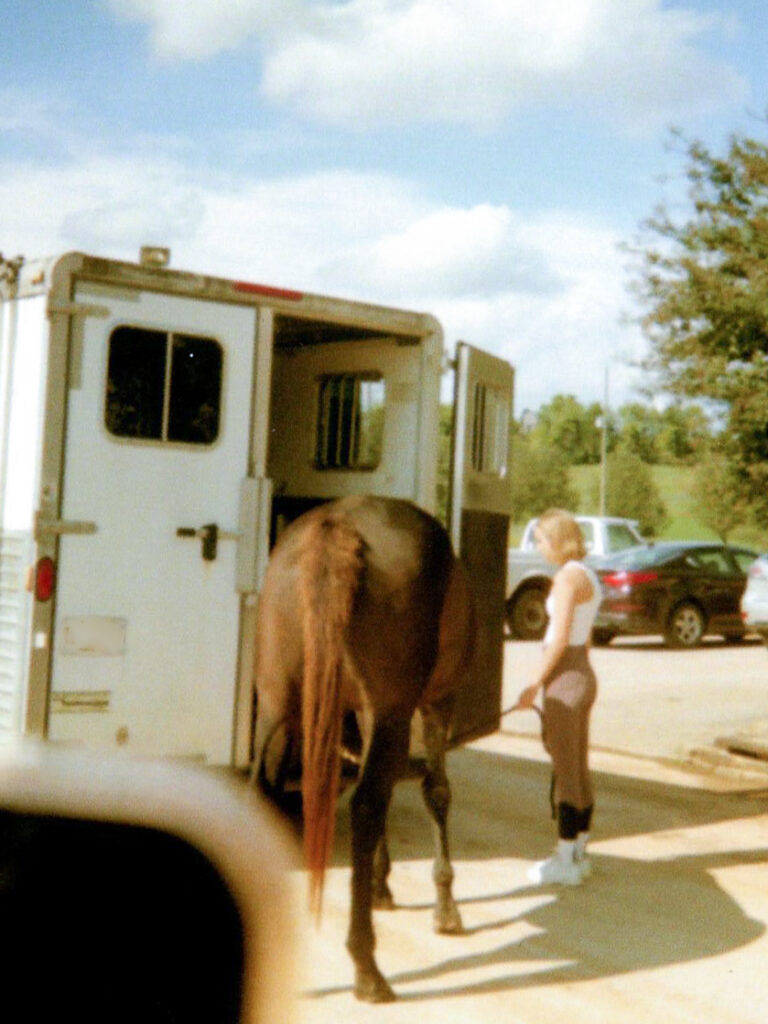
Catching:
Catching is the first step to every single barn day and it’s definitely a tell-tale of your relationship with your horse.
We’ll save the rules of catching for another blogpost, but don’t be discouraged if your horse doesn’t come to you right away! When I bought my second horse, Theo, it took me an hour and a half to catch him the first time, but now he comes to me right away : -)
Anyways, for catching, you want to bring a halter and lead-rope out to the pasture with you, and sometimes treats (however, I would advise against giving treats until after you have the halter on).
*note: I wouldn’t recommend buying a halter until you know the size of your horse, but if not, then consider rope halters!*
Here are some halters:
Lead Ropes:
Treats:
Grooming:
As I said earlier in this post, horses are exceptionally messy creatures. They roll in mud during the winter to keep themselves warm, but they also roll in the mud in the summertime to keep themselves cool… a never cycle, really.
Making sure to get all of that dirt off is super important – especially where the saddle will be. To make this process more efficient, consider investing in high-quality grooming products that will get the job done.
Your grooming routine should use the following brushes: curry comb, hard brush, soft brush, and hoof pick (mane and tail brush with detangler is optional). Consider getting a grooming kit such as this Oster Equine 7-Piece Grooming Kit that will provide the essentials!
Post-ride care!
In this part of your barn routine, you’ll focus on prepping your horse for the night and making sure that they’ll be comfortable until your next arrival!
As said before, you’ll still want to pay attention to your horse: be checking for any signs of lameness since your ride, as well as possible saddle sores. A lot of times these injuries are overlooked, which can cause problems in future rides, so always check for signs of discomfort to keep you and your horse safe!
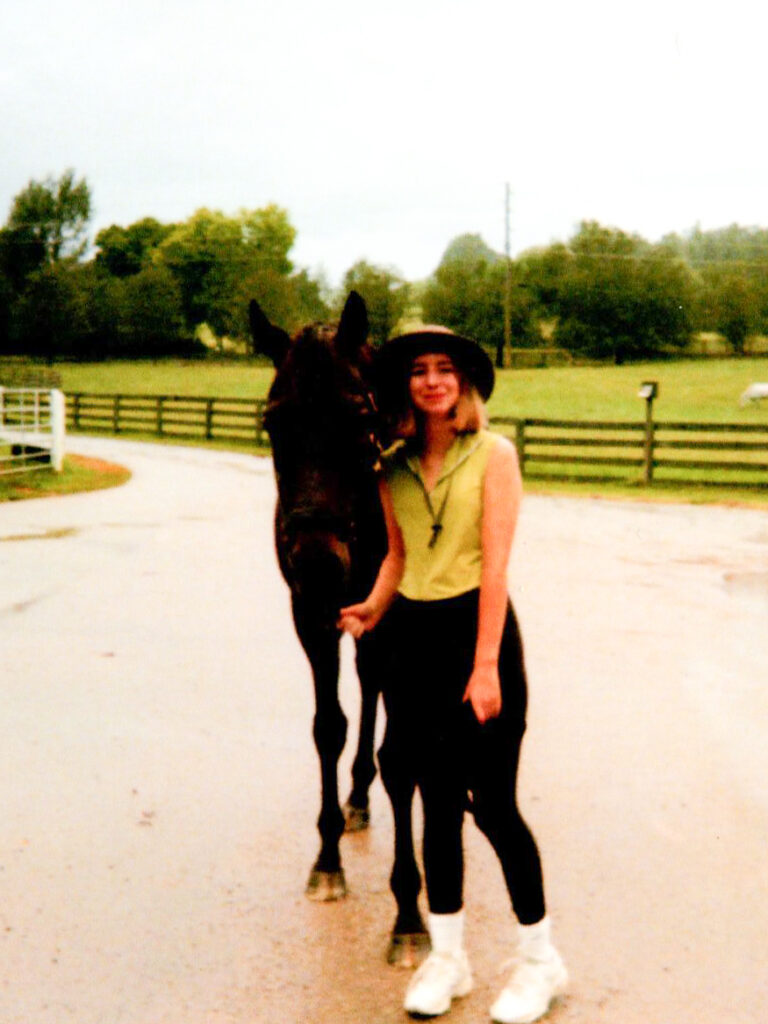
Bathing:
Now that you’re all done with your ride, there’s a solid chance that both you and your both worked up a sweat. To make sure your horse isn’t crusty for your next ride and his/her skin doesn’t get irritated by the dried sweat, go ahead and give them a quick bath.
As I’ve sad many times throughout this post, if you’re boarding at a stables, then you’ll most likely have access to facilities, including a wash stall (a hose will also suffice).
And though you can technically just give your pony a quick rinse, every now and then you’ll want to add shampoo and condition to keep that coat sleek! Here are some bathing essentials!
Shampoo and conditioner:
- Mane N’ Tail Shampoo and Conditioner set
- Cowboy Magic Rosewater Shampoo and Conditioner Set
- ShowSheen 2-in-1 Shampoo and Conditioner
Sponges and sweat scrapers:
Post-ride:
After finishing up with your ride and bathing, it’s time to start thinking about putting your horse away. Start with a cooler if it’s going to be chilly outside, and then fly spray once your horse is all dry.
If it’s the winter time and you skipped bathing altogether, then toss on a blanket depending on your horse’s coat and the temperature.
Once you put your horse away, you’re ready to call it a day!
First Aid:
Now, if you did notice a minor injury or scratch on your horse that requires attention (but doesn’t warrant a vet call), then you’ll want to whip out that first aid kit.
If you’re not entirely sure how to handle the situation, it’s 110% okay to ask for help! However, you’ll (a) still want to have your own kit on hand (b) you won’t always have someone around who can help. To avoid the hassle of trying to build your own kit, look into getting one that’s already complete like this Creative Pet First Aid Kit!
If you do decide to build your own, consider including the following:
Everything you need for your first horse: riding!
Now that we’ve covered all the technical stuff, it’s time to hop into everyone’s favorite part of the day: riding. In the section, we’re going to talk about safety equipment as well as exciting tack, such as saddle pads and bridles!
For the horse:
In the saddle, you’ll want to first look at the terrain you’ll most frequently be riding on as well as your discipline. But before we get into it, note that I will not be covering anything that will need to be fitted to your horse.
Yes. you’ll need a saddle for your first horse, but you’ll want to find one after you make the big purchase! That way, you don’t have to worry about blowing a few hundred on tack that won’t fit – remember, every horse is different!
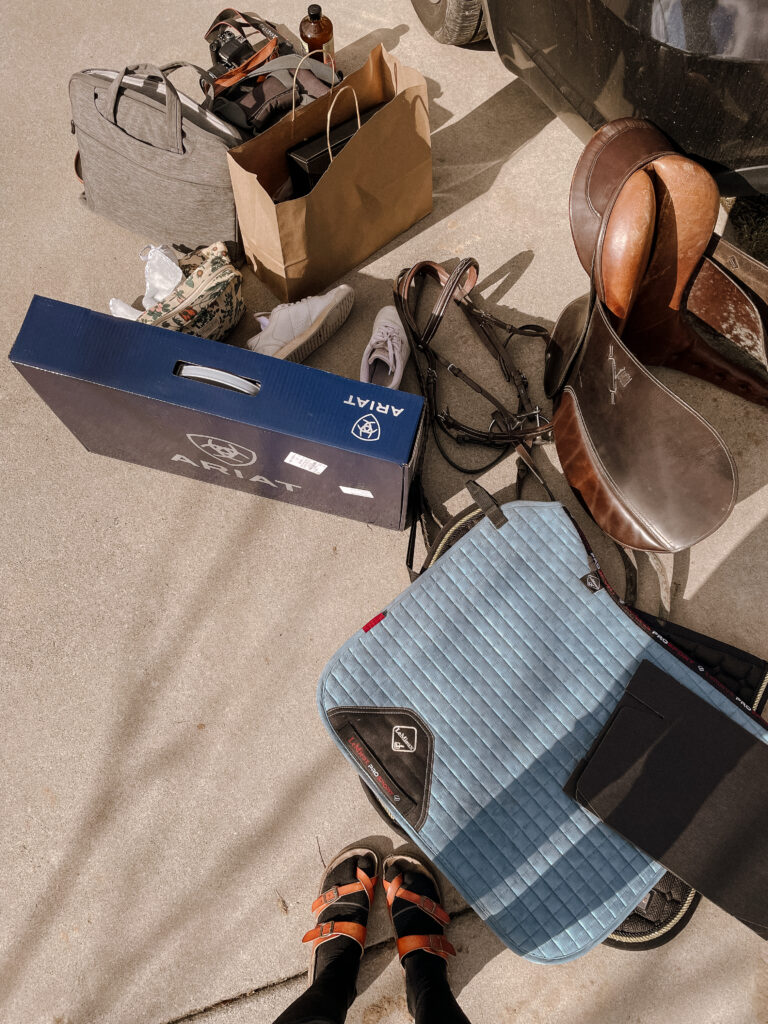
Secondly, typically if you’re jumping you’ll want leg protection for your horse – but this isn’t always necessary, especially if you’re not jumping high yet. All in all, I wouldn’t worry about buying boots until after you’ve purchased your horse and assessed the situation and/or see what previous owners did. ; -)
Finally, with your new horse you’ll want to have a saddle pad, bridle, and bit.
Here are some saddle pads:
*note: for both english and western disciplines as well as price ranges*
- Lemieux Dressage Saddle Pad
- Lemieux Close Contact Saddle Pad
- Dover Saddlery Dressage Pad
- Dover Saddlery All Purpose Pad
- Weaver Contoured Western Saddle Pad
Bridles:
- Dover Saddlery Single Crown Hunter Bridle
- Henri De Rival Fancy Stitched Bridle (this is the one I have!)
- Weaver Leather Western Headstall
- HORZE Cross-Under Bitless Bridle
Remember that every horse is different with specific needs, but here are some soft bits!
- Herm Sprenger Double-Jointed Snaffle
- Dover Saddlery Hunter D-ring Snaffle
- Metalab Walt Woodard O-Ring Snaffle
For the rider:
As riders and handlers of such large animals, it’s so important that we keep our bodies protected! Trust me, I used to think that I was out of reach from injuries too… so I almost never wore a helmet. Now that I’ve broken some bones, been thrown and stepped on, etc., I never get on my horse without one.
This isn’t to scare you in the slightest, but definitely don’t overlook the following list!
For you, the rider, you’ll want to consider a helmet, boots, and even body armor (to protect your back) if you do more strenuous riding such as CC or fast-paced trails. Furthermore, if you ride English, you’ll want to look into half-chaps (or tall boots) and breeches for extra protection!
Check out this post: The Best Equestrian Attire for Summer!
Helmets:
For more helmet ideas, visit: The Best Helmets for Equestrians
Boots:
- Terrain Boots by Ariat (these are so comfortable!)
- Ariat Heritage Paddock Boots with Breeze Half Chaps
- Ladies’ Unbridled Roper Western Boots by Ariat
- Ariat Heritage Contour Field Boots
Hey, I’m a big fan of Ariat : -)
Body Armor (optional):
Everything you need for your first horse: complete!
Boy, was that a doozy! Horses are such incredible (and incredibly needy) animals; and it’s got to be the most wonderful experience to bring one home for the first time! Remember that there is always MORE to learn so don’t sweat it, but have plenty of fun!
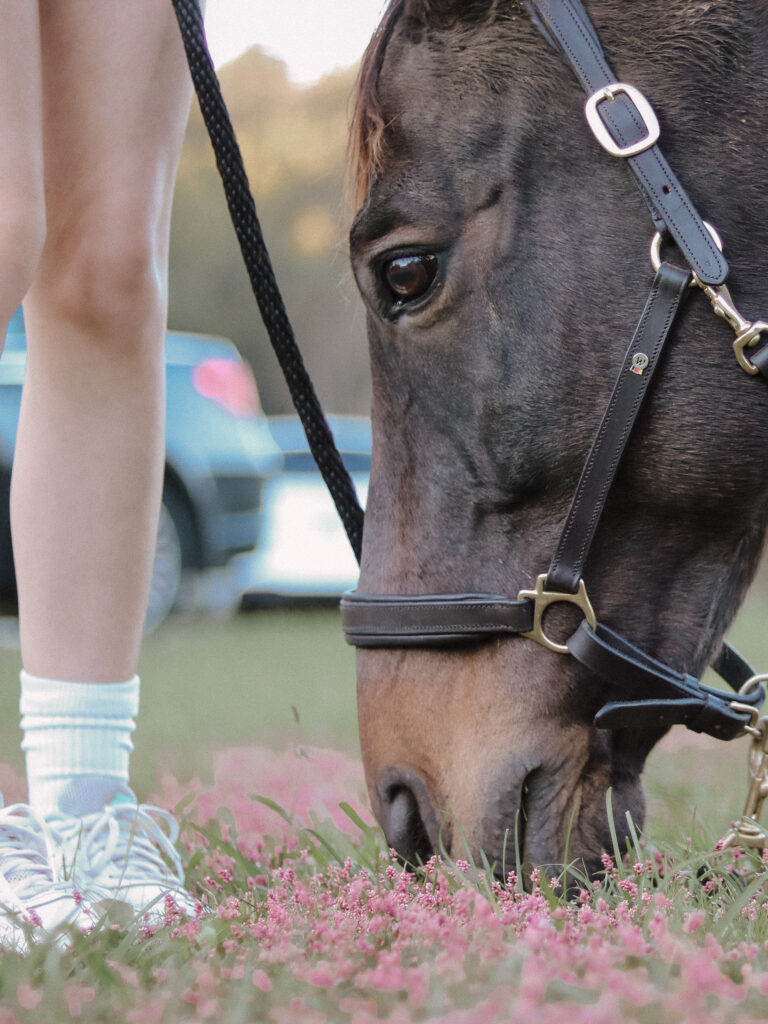
And at the end of the day, though overwhelming, picking out everything for your first horse should be blast – don’t forget that ; -)
Tell me, what are you most excited for while getting your new horse??
All the best,
Laura
New here? Get to know me!
Want more? Follow me on Instagram!
Round Up list:
- Feed pan
- Feed Bucket
- Hay net
- Water Trough Water Heater
- Jolly Ball
- Pitch Fork
- Manure Fork
- Push Broom
- Wheelbarrow
- Muck Cart
- Halter
- Lead Rope
- Treats
- Brushes: Curry Comb, Hard Brush, Soft Brush, and Hoof Pick
- Shampoo and Conditioner
- Bathing Sponge
- Sweat Scraper
- Fly Spray
- Cooler
- Blanket
- First Aid Kit
- Saddle
- Saddle Pads
- Bridle
- Bit
- Helmet
- Boots
- Body Armor
Round Up Links:
- Fortex Feeder Pan
- Little Giant Black Bucket
- Kensington Slow Feed Hay Bag
- Dover Saddlery Small Mesh Hay Net
- Majestic Ally Slow Feed Hay Net
- Farm Innovators Tank De-Icer
- Horsemans Jolly Ball
- Dover Saddlery Fine Tine Fork
- Truper Tru Pro Manure Fork
- Stiff Sweeping Push Broom
- Poly Wheelbarrow with Round Handle
- Gorilla 4-Wheel Cart
- LITTLE GIANT Muck Cart
- Little Giant Plastic Muck Tub
- Weaver Rope Halter
- Weaver Nylon Halter
- Perri’s Leather Halter
- Dover Saddlery Heavy Cotton Lead Rope
- Dover Saddlery Heavy Cotton Lead Rope
- Weaver Poly Lead Rope
- MannaPro Peppermint Treats
- Stud Muffins
- MannaPro Low Sugar Treats
- Dover Saddlery Tradtional Curry Comb
- Waldheusen Body Brush
- Winner’s Circle Ultra-soft Brush
- Equinimity The Ultimate Hoof Pick
- Oster Mane and Tail Brush
- Mane N’ Tail Detangler
- Mane N’ Tail Shampoo and Conditioner set
- Cowboy Magic Rosewater Shampoo and Conditioner Set
- ShowSheen 2-in-1 Shampoo and Conditioner
- Tail Tamer Sponge
- Tough 1 Bristle Sponge
- Happy Horse Sweat Scraper
- Rambo Cotton Cooler
- Absorbine UltraShield Fly Spray
- Noble Equestrian Turnout Blanket
- Creative Pet First Aid Kit
- Corona Ointment
- Cohesive Wraps
- Saline Solution
- Ice Packs
- Wonder Dust
- Gauze Rolls
- Thermometer
- Lemieux Dressage Saddle Pad
- Lemieux Close Contact Saddle Pad
- Dover Saddlery Dressage Pad
- Dover Saddlery All Purpose Pad
- Weaver Contoured Western Saddle Pad
- Dover Saddlery Single Crown Hunter Bridle
- Henri De Rival Fancy Stitched Bridle
- Weaver Leather Western Headstall
- HORZE Cross-Under Bitless Bridle
- Herm Sprenger Double-Jointed Snaffle
- Dover Saddlery Hunter D-ring Snaffle
- Metalab Walt Woodard O-Ring Snaffle
- One-K Defender Helmet
- Ovation Delux Schooler
- Charles Owen Luna Helmet
- Terrain Boot
- Ariat Heritage Paddock Boots
- Breeze Half Chaps
- Ariat Ladies’ Unbridled Roper Western Boots
- Ariat Heritage Contour Field Boots
- Airoware Shadow Back Protector
- Tipperary Ride Lite Riding Vest

